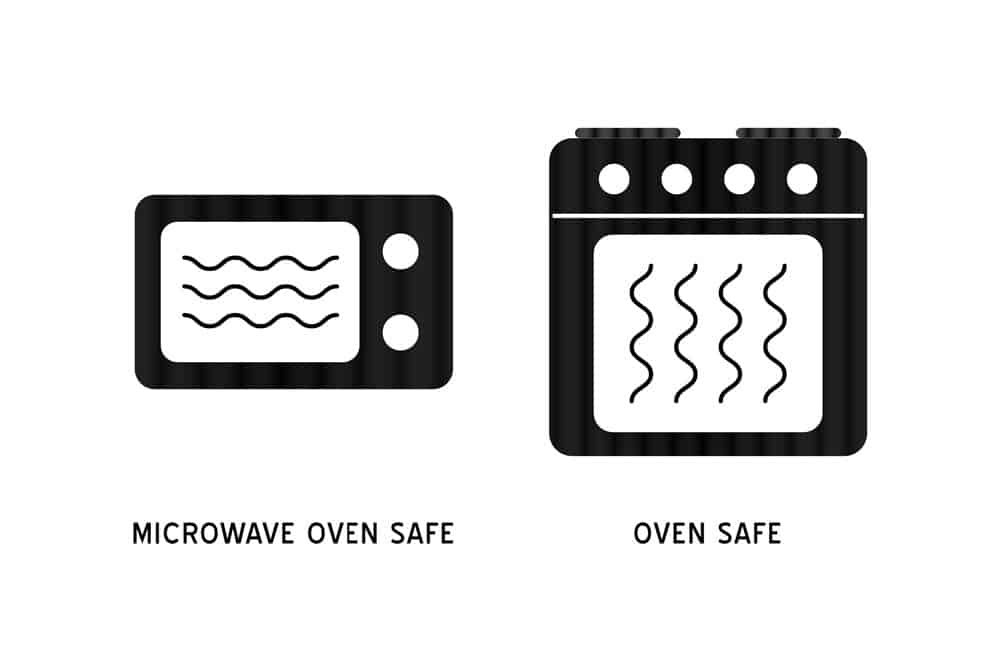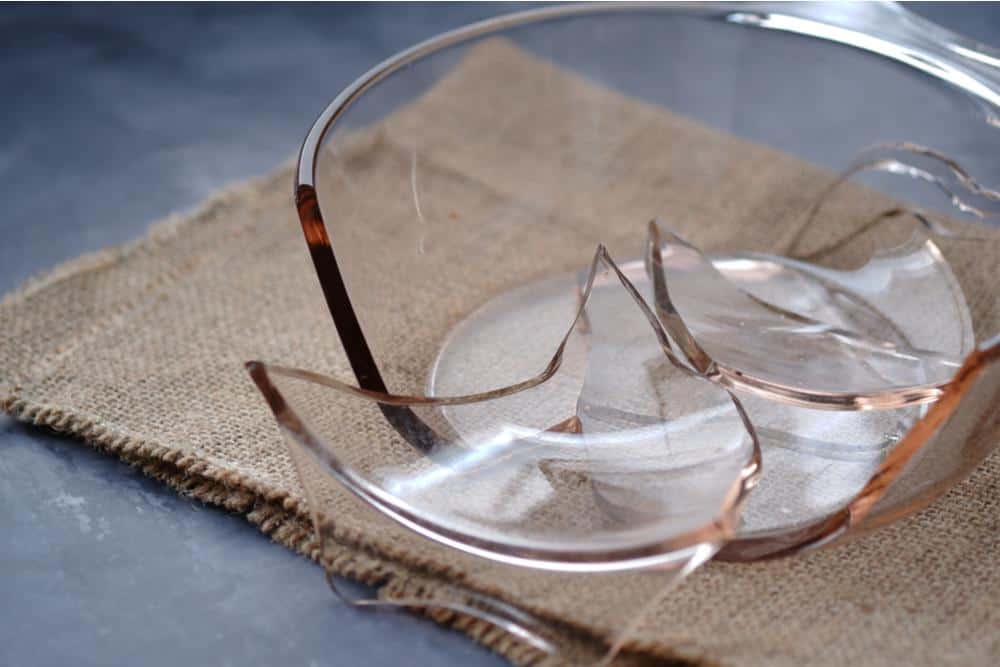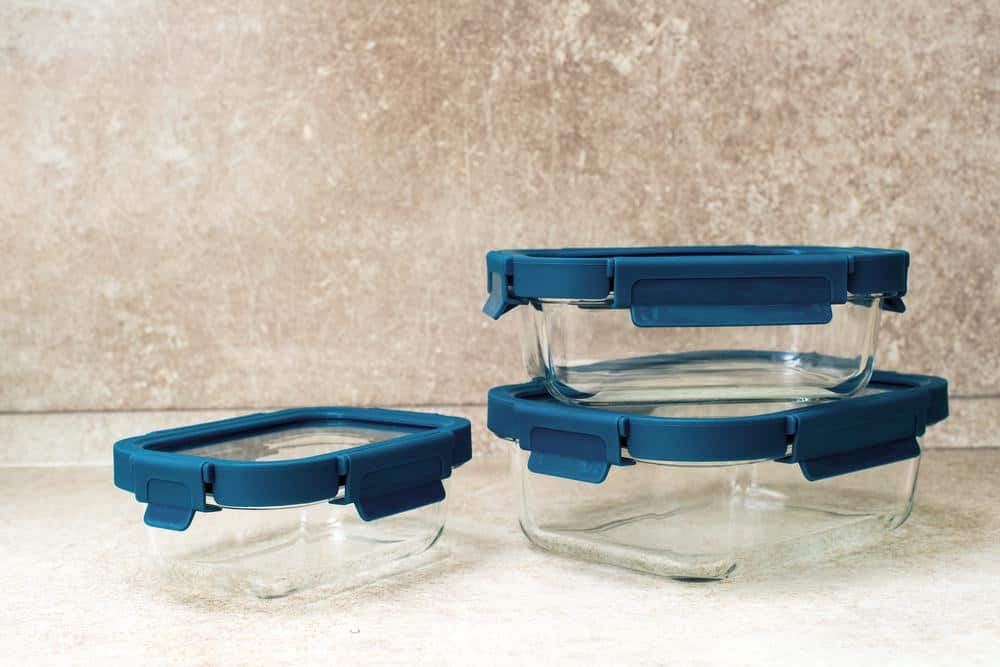Nowadays, glass cookware has become trendy, and you can use them for different tasks in the kitchen. For instance, you can use one to bake, store food in the freezer, defrost, and reheat food in the microwave. But is all glass oven safe?
A lot of cookware items are comprised of some sort of glass - but is all glass created the same? You may think since containers made of Pyrex glass are typically safe for the oven - maybe most glassware is oven-safe - but you’d be wrong.
You can safely use some glass cookware sets in the oven and even the toaster oven. Others may be destroyed in the the oven. You can always identify oven safe glass containers by the labels at the bottom and check for temperature guidelines before placing your glass containers in the oven.
So, is all glass oven safe for your cooking needs? Here's a deeper look into this subject and answers to the most common questions about using glassware in the oven.
Since all types of glass are not oven-safe, using glass bakeware can be tricky. Even oven safe glass may not all be the same. Maximum and minimum temperature thresholds may vary by piece. You’ll need to know the thresholds of your glass cooking containers before even thinking about putting glass in your oven.
Take an empty glass container or glass pan and flip it over. You should be able to see an icon or graphic which lets you know that your cookware is oven-safe. If you don’t see this graphic, you should assume that it isn’t safe to put your glass container in the oven. You can also look your product up online or find the manufacturer’s manual to learn whether your glass can be put in the oven.

If you see graphics like this on the bottom of a glass container, according to the manufacturer, it is oven-safe.
It is oven safe if the container consists of borosilicate glass or tempered glass.
If your dish doesn't have the original box and instruction manual, you can identify its brand and type of glassware for a quick internet search. Most online sellers are likely to have comprehensive descriptions of the product.
Tempered glass undergoes a thorough manufacturing process. The process involves chemical and thermal treatments that produce tough glass used to protect the glass from various shortcomings.

Tempered glass can withstand oven temperatures (if the temperatures don’t get too extreme)
The food industry uses tempered glass for plates, drinkware, bakeware, and oven doors. Glass bakeware made with tempered glass is heavy, durable, and oven-safe. The sets also have better thermal shock resistance.
Pyrex glassware products consist of tempered glass, and you can use them in your oven as long as the heating temperature doesn't go above 450°F. They are also microwave safe. This applies to the Pyrex Dish - but not the plastic lid that comes with your Pyrex cookware.
Borosilicate glass comes from a mixture of boron trioxide, which enhances its response to heat. As a result, it comes with a low coefficient of thermal expansion that makes it more heat and thermal shock-resistant.
Borosilicate cookware is popular in the service industry and the kitchen for baking. Dishes made from borosilicate are lighter but can withstand heat up to an oven temperature of 450°F.
Some glass containers can break when placed in the oven regardless of being oven-safe. That's why it's essential to check the manufacturer's specifications beforehand. Some of the factors that can cause glass bakeware to shatter in the oven include:
Even if your glass is oven safe, you can’t necessarily conclude that it will survive a trip to the oven. While the label may say “oven-safe” any sort of chips, cracks, or structural imperfections could result in glass shattering once exposed to high temperature.
This is true even if the glass is tempered (like pyrex glass). Be sure to give your glass a once over prior to putting it in your oven.
Thermal shock is when an object is posed to quickly changing temperatures. The temperature changes so quickly that parts of an object may expand (or contract) at different rates.

Thermal shock can be a threat to all glass - rapidly changing temperatures can easily break glass
Thermal shock is one of the most common reasons for glass breakage in the oven. Even oven-safe glass doesn't have the capacity to handle all drastic temperature changes.
If possible, at least give oven safe glass a chance to warm up a bit prior to moving between a freezer (or refrigerator) and your oven.
It is a short list of glass materials that are certain to be oven safe:
These types of glass are oven ready. They shouldn’t break or shatter in your oven, provided that they’re in good condition and relatively free of cracks, scratches or other damage.
However, you place non-tempered glass in the oven because it lacks the elements required to withstand heat.
Most people don't check on temperature limits when placing their glass cookware in the oven. Unfortunately, that temperature limit often depends on the manufacturing process. Your glass might shatter if you stay above the manufacturer's temperature limit recommendation.
Don’t want to break your glass cookware and have to buy new containers? Follow these steps to safely use glass bakweare.
Glass cookware can't handle drastic temperature changes. So to avoid breakage, you should get your container from room temperature to a preheated oven.
Going straight from the freezer to the oven can make your glass break. Also, you should avoid taking your glass container direct from the oven to the freezer. Instead, you should place it on a room temperature surface first.
As noted earlier, not all glass is oven safe. While it may cost a bit more to invest in tempered glass containers labeled as oven safe, it's worth knowing that your glassware is safe to use in the oven. It's also vital to note that these containers also have their temperature limits, so it's crucial to remain below the limit to avoid breakage.
The following materials generally aren’t tempered glass and should not be put in the oven. Unless they have the “oven-safe” stamp on the bottom, you can be certain that one trip to the oven will be catastrophic.These glass materials (and materials that accompany glass) will almost certainly break (or melt) in the oven:

A lot of glassware comes with plastic lids for storage. Plastic lids are NOT oven safe
If you're using oven-safe glass, check the manufacturer's temperature recommendations. Most manufacturers limit their temperatures from 35°F to 500°F, but staying below this limit will put you on the safer side.
Not all glass-made kitchen items are ideal for use under high heat levels. That means you can only use oven-safe glass cookware made of tempered glass and borosilicate glass products.
If you still have your manual from your glassware purchase, peruse it to make sure the material is oven-safe. If you can’t find the original instructions that came with your purchase, the same information should be available online. You should be able to find the safe temperature limits for your glass products. With this information at hand, you can bake or heat your food with minimal chances of the glass cookware breaking or shattering in the oven.
Always inspect your glass container to ensure there are no scratches or cracks. These signify weak points in your containers, which might break when subjected to high-temperature fluctuations.
Adding some water to the bottom of the container when baking dry foods will do you a big favor. Dry food often releases some water content when cooking. However, the water on the surface prevents it from contacting the hot surface of the container.
As you cook, the water warms up evenly. It allows the glass to also warm up at an even rate, preventing potential shattering.
The beauty, safety, functionality, and versatility of glass cookware make it an ideal item in the kitchen. Of course, you might have other materials in your kitchen, but glass covers a wide range of benefits for baking.
If you are thinking of replacing your bakeware, glass-made ones should be a priority. Some of the benefits you can look forward to include:
Glass cookware heats your food evenly, especially when you heat it slowly. Also, the cookware doesn't have any metal, so the oven's energy heats the food, not the glass.
The glass might take longer to heat, but it retains the heat longer than other baking materials. That means you can keep your lasagna or other foods warm for long, even after removing them from the oven.
Some cookware materials come with non-stick surfaces that release toxins at higher temperatures. However, glass cookware is non-toxic. They provide an ideal way to eliminate toxins and chemicals with adverse health and environmental effects.
The best thing about oven-safe glass is that it's naturally non-stick. That makes it easier to use and clean. Some food particles might get stuck when cooking, but it's easy to dislodge them. You can clean it using sink water or a dishwasher for optimal convenience.
Better still, you don't need oiling or seasoning for your cookware after using them because glass cookware doesn't rust.
The most notable thing about glass bakeware is that you can see through it.
With glass bakeware, you can peer into the oven to see how your food is doing. As a result, you can determine how your food contents cook and when they're ready.
Glass also has the advantage of being able to see what is inside the container when it is has been transported to the refrigerator
Glass bakeware is inert. Therefore, you can use the same container in the refrigerator and in the oven. You only have to avoid drastic temperature changes that could cause your glass to shatter. You can also store any leftover food in the same glass container in the refrigerator afterward.
Is all glass oven safe? It's important to understand that not all glass is convenient for use in the oven, so you should take the time to make sure you have the right glass bakeware or cookware.
First, you should get your glass cookware from a reputable manufacturer. Such professionals make glass cookware with the right materials that add no adverse chemicals to your foods. In addition, the best manufacturers only use food-grade glass for all cookware.
It's always advisable to research your preferred glass cookware on the internet to know what other people are saying. Also, ask for recommendations from your friends and family who use various glass-made cookware.
Plus, only go for oven-safe glass cookware with optimal resistance to heat changes. Tempered glass bakeware is the best deal when it comes to heat resistance. However, you should ensure that your bakeware set has a heat-proof label and indicates that it's oven safe.
